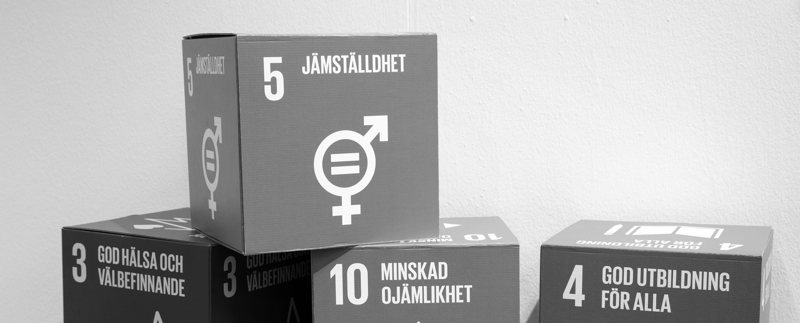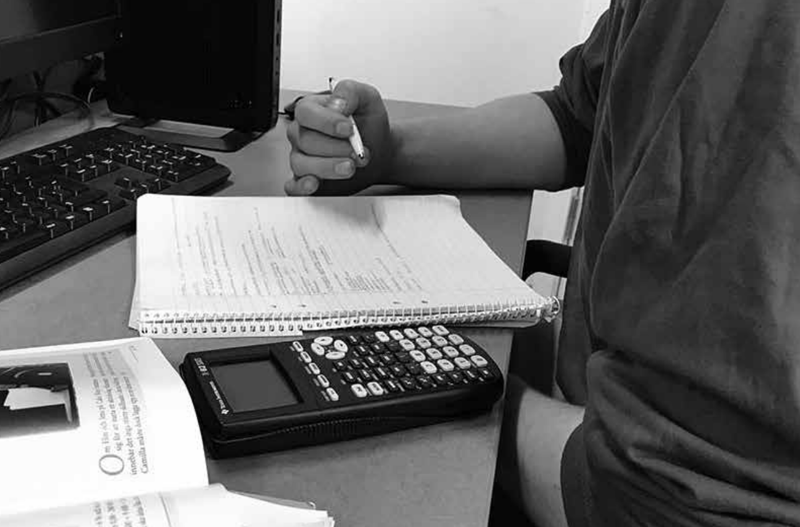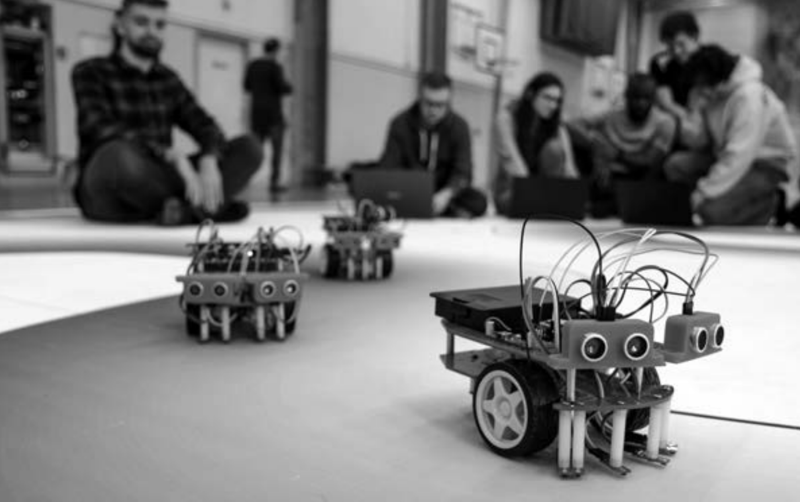Important starting points for gender equality
Equality between women and men is a clear political goal in Sweden. Public actors have a responsibility to conduct activities that provide equal prerequisites, conditions and opportunities for everyone who takes part in them and to contribute to an equal society.

Gender equality
Gender equality means that women and men have the same rights, obligations and opportunities in all areas of life. Gender equality is not only about equal gender distribution. It is also about making clear what affects women's and men's living conditions in various areas of society.
Gender mainstreaming
The main strategy within Swedish gender equality policy is gender mainstreaming. Gender mainstreaming means that a gender equality perspective must be taken into account in all policies that affect people's conditions, so that all women and men, girls and boys, can live equal lives.
Gender equality is created and maintained where we make decisions, allocate resources and create norms. Work for gender equality needs to take place on a daily basis, in ordinary control and management systems.
Read more about gender mainstreaming.
Gender equality budgeting
Gender equality budgeting is about allocating resources in an equal way. It is a strategic tool that involves integrating gender equality into the entire process for how money is planned, followed up and distributed within an organisation's main function and core processes. The idea is to distribute society's resources so that it promotes gender equality both within the organisation and in society as a whole. To achieve this, the organisation needs to examine how the distribution of resources affects different groups and gender equality.
The Swedish Prison and Probation Service (Kriminalvården) conducts its activities in a gender-separated manner, with separate facilities for women and men. Women's institutions are usually smaller units, which leads to the fact that the daily cost of care for women is higher than for men. At first glance, it may seem that incarcerated women thus receive a greater share of society's resources than incarcerated men. The operation of the correctional service must provide inmates with meaningful employment during their time in prison and promote their adaptation in society after release. In the work operation, the inmates work and it must, among other things, contribute to increasing the inmates' ability to understand working life and labor market conditions. In this way, work drives can increase employability and thus re-establishment in society after serving a sentence.
Since the women's institutions are often smaller than the men's institutions, it is more difficult to offer a wide range of work operations based on the needs of each individual. This leads to a higher degree of women engaging in other employment that does not provide the same work life experience as work operations. Based on this analysis, the Prison and Probation Service assessed that this was an unreasonable gender difference, to the disadvantage of women. They simply needed to strive for women to have the same access to this type of support as men do. One measure was to redistribute resources through targeted investments to the work operations in institutions for women. The investment resulted in an increase in the percentage of admitted women in the workforce, and in 2020 it was for the first time at the same level as for men.

Kristianstad University has successfully worked with redistribution of resources. In connection with an addition in the regulatory letter to consider gender equality when distributing research funds, Kristianstad University changed its resource distribution model, as approximately 70 percent of the resources were allocated to men. The change meant, among other things, that Kristianstad University halved the time allotted for research for professors (from six to three months), docents (from three to 1.5 months) and lecturers (from two to one month).
In addition to research and teaching merits, collaboration and the previous year's performance in relation to the time researchers had set aside for research were also rewarded. The change resulted in approximately 60 percent of the research funds being distributed to women and approximately 40 percent to men (in 2019), a distribution that fairly well corresponds to the gender distribution at the university. You can find out more about this in our report Jämställdhet i akademin (Gender equality in academia) (2020).

Since 2020, the Swedish Pensions Agency's annual report includes a gender equality report of its management costs. The table shows the costs of administering the systems and benefits for which the Pensions Agency is responsible, divided between women and men. With the help of this arrangement, the Pensions Agency can begin to link the use of resources with gender equality. It is a good starting point for further analyses of the agency's impact on gender equality and it provides an opportunity to follow developments in the outcome over time. The table is based on data and key figures that are already used in the pension authority's reporting. So they have not had to produce any new measurements or new data to compile this table.
| Table 72. Equality reporting of management costs | ||||||
| Result 2022 | Women | Men | Women | Men | Distribution keys in the annual report | |
| mnkr | % | % | mnkr | mnkr | ||
| General pension | 829 | 50 | 50 | 414 | 415 | Number of closed cases |
| Housing allowance and elderly support | 352 | 57 | 43 | 200 | 152 | Number of closed cases |
| Survivors' pension | 85 | 67 | 33 | 57 | 28 | Number of closed cases |
| Voluntary pension insurance | 2 | 54 | 46 | 1 | 1 | Number of pensions paid |
| Claims | 26 | 61 | 39 | 16 | 10 | Number of closed cases |
| Re-examination | 21 | 55 | 45 | 12 | 9 | Number of forwarded cases |
| Payments | 93 | 57 | 43 | 53 | 40 | Number of payments |
| Premium pension management | 172 | 35 | 65 | 60 | 112 | Number of fund changes |
| Informants | 9 | 51 | 49 | 5 | 4 | Number of meetings |
| Customer service | 69 | 60 | 40 | 41 | 28 | Number of incoming calls |
| my Pension | 37 | 46 | 54 | 17 | 20 | Number of forecasts |
| Service offices | 0 | 53 | 47 | 0 | 0 | Tot. pension administration excl review |
| Seasonal investment | 2 | 46 | 54 | 1 | 1 | Same as MiP:s keys |
| Other communication | 106 | 49 | 51 | 52 | 54 | Sum of info. and communication total excl MiP and Orange envelopes* |
| Number of mailings 50 percent each | ||||||
| Analysis and statistics | 70 | 50 | 50 | 35 | 35 | 50 percent each |
| Total | 1 899 | 977 | 922 |
A quick look at the records can provide insights into analytics:
- The costs of benefits such as housing allowance and elderly support are higher for women than for men. Possible explanations are that women have lower pensions and are more often survivors. If the processing of housing allowance becomes underfunded so that applications and payments take longer, then it affects a group of mainly female pensioners who are already in a tough financial situation.
- The item for customer service is a large item of SEK 69 million. The entry for the My Pension website is lower at SEK 37 million. If the agency were to scale back customer service via phone and refer to its website to a greater extent, we can see here how it would turn out from a gender equality perspective. Among those who need help by telephone, 60 percent are women. Among those who use the web, 54 percent are men.
In total, the figures show that, overall, the Pensions Agency has greater costs for women than for men, but also that this is connected to different conditions for the different groups. Contributing to gender equality is not always the same as reaching 50/50 in the use of resources. The table instead makes it possible to formulate problem statements and goals based on gender equality analyses, and to ask the question: how can our use of resources contribute to equality to a greater degree?
(*The "orange envelope" in Sweden, known as "orange kuvertet," is an annual statement sent to individuals by the Swedish Pensions Agency (Pensionsmyndigheten). It contains important information about the state of their pension and is intended to help individuals understand and plan for their retirement.)
Gender equality policy
Working for increased gender equality means ensuring that women and men have the same power to shape society and their own lives. This is also the overarching goal of Swedish gender equality policy, which has been adopted with broad political consensus. The overarching goal is broken down into six sub-goals that indicate the focus and direction of gender equality policy.
- Equal division of power and influence: Women and men should have the same right and opportunity to be active citizens and to shape the conditions for decision-making.
- Economic equality: Women and men should have the same opportunities and conditions in terms of paid work that provides economic independence throughout life.
- Equal education: Women and men, girls and boys, should have the same opportunities and conditions regarding education, study choices, and personal development.
- Equal distribution of unpaid housework and care work: Women and men should take equal responsibility for housework and have the opportunity to give and receive care on equal terms.
- Equal health: Women and men, girls and boys, should have the same conditions for good health and be offered care on equal terms.
- Men’s violence against women must end: Women and men, girls and boys, should have the same right and opportunity to physical integrity.
In Sweden, work for equal rights and opportunities as well as gender equality is regulated by both international and national frameworks. Internationally, Sweden has committed to following conventions on human rights, such as the UN Convention on the Elimination of All Forms of Discrimination Against Women (CEDAW). We have also committed to promoting sustainable and fair development according to Agenda 2030.
At the national level, fundamental freedoms and rights are protected in the Constitution, which states that all Swedish citizens have the same fundamental rights. Equal rights and opportunities as well as gender equality are also regulated in other laws such as the Discrimination Act, the Higher Education Act, and the Education Act.
Last updated: 21:22 - 2 December 2024
